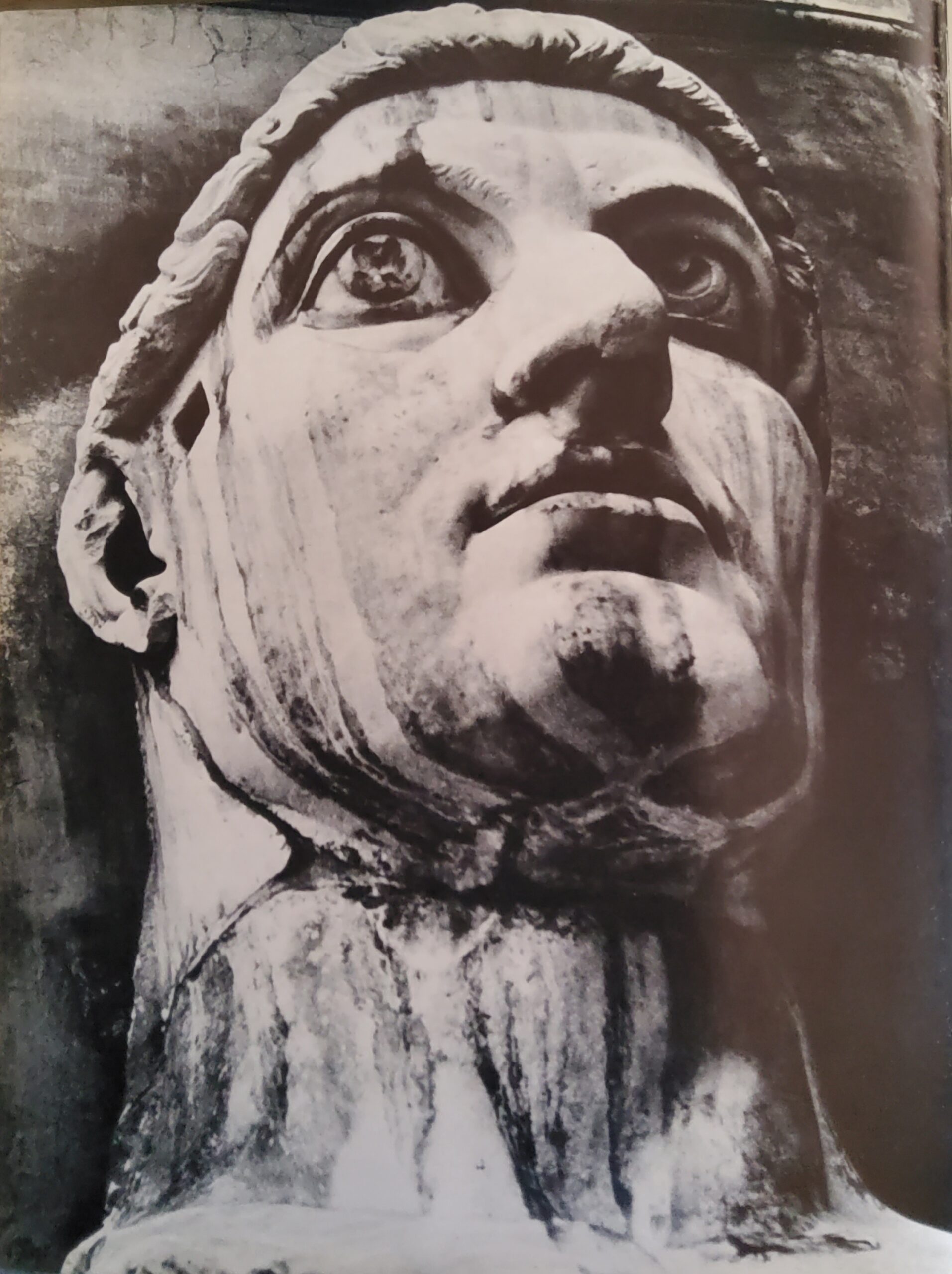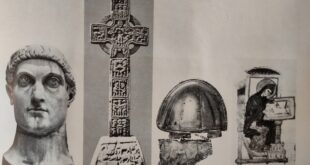St. Benedict’s monks tried to poison him, on one occasion it is said – and they often disregarded his instructions, but monasticism in the West, was created by St. Benedict. Before he founded Monte Cassino in 520, there were numerous other groups of monks in Europe, all with their own monastic rules, but Benedict’s Rule for his followers was the first to achieve general acceptance. It provided an ideal for monasticism that was at once disciplined and possible to achieve and maintain. With its emphasis on the individual monastery, Benedict’s Rule was ideally suited to a world degenerating into chaos …
Read More »A. D.
Old Europe Crumbles (451 – 520 A.D.)
Old Europe crumbles as barbarian waves batter civilizations. Ironically, the victory on the Mauriac Plain sealed the fate both of victor and vanquished. After his death in 453, Attila’s empire broke up not only as a result of the feuds among his heirs, but also because of a successful rebellion among his German subjects. For the victorious Roman general, Actius, the outcome of the battle was still more directly catastrophic. He fell victim to a palace conspiracy of enemies who feared his immense prestige. The Emperor Valentinian III, is said to have boasted of the disposal of this powerful and …
Read More »Attila, The Scourge of God (451 A.D.)
Attila, the “Scourge of God” was the legendary force that — curiously enough — helped to hold the tottering Roman Empire together for a few more years. Halfway through the fifth century, the Empire was defended by an array of feuding barbarian tribes enlisted as mercenaries. These tribes were united by a common fear of the Huns, who had left Central Asia to invade India, Persia, Central and Eastern Europe and were now threatening the West. Aetius, commander-in-chief of the Roman army, knew the Huns well and their leader, Attila, in particular — the Roman general had once been a …
Read More »Visigoths and Gaiseric (432 – 451 A.D.)
The Visigoths, led by Gaiseric, settle in North Africa and challenge Rome. Ireland before St. Patrick According to the most ancient traditions of Ireland, her history had been linked to that of the Mediterranean world long before the coming of St. Patrick and the religion of Rome. Even after St. Patrick, the history of the country was to remain, the preserve of an oral tradition handed down by a class of minstrels or bards. In western Europe, these minstrels were the latest heirs of an heroic Iron Age society, of which the earliest example known to us was the Greece …
Read More »Mission to Ireland (432 A.D.)
In the spring of 432, Laoghaire, ruler of a petty kingdom in northern Ireland, gathered his court near Tara to celebrate the annual rites of his pagan religion. The Christian missionary Patrick, appeared in the midst of the gathering, confounded the King’s magicians with a miracle of fire and — on Easter Sunday — converted Laoghaire. Patrick went on to strengthen the fledgling Christian Church in the Emerald Isle and to establish a religious tradition that was to endure for centuries. As Continental Europe slipped into the Dark Ages, following the collapse of the Roman Empire, it was the monks …
Read More »Arian Heresy and the Council of Nicaea (312-432 A. D.))
The Arian threat occured in the fourth century, which opened with the triumph of Christianity in the Roman Empire, closed with the beginning of the Dark Ages. Leaders of the barbarian tribes, massing outside the Empire’s frontiers, had already infiltrated their agents into the high places of imperial politics. The old order of Roman imperial administration, already severely weakened in the late third century and only partly restored by the reforms of Diocletian, was gradually disrupted during the years following Constantine’s death. Thus, the gulf between the East, where the imperial system continued and the West, where conditions of virtual …
Read More »In This Sign Shalt Thou Conquer (312 A.D.)
Constantine’s victory at the Milvian Bridge, ensures the spread of Christianity, throughout the Roman Empire. The Roman Empire, at the end of the third century A.D., was at the point of collapse. Struggles amongst rival emperors brought frequent civil wars, while barbarian hordes threatened the borders. Early in the new century, a soldier named Constantine proclaimed himself Emperor and immediately set out to make good his claim in a series of campaigns that took him, by the summer of 312, to the edge of Rome. Constantine had a momentous vision — a vision in which he was told, that he …
Read More »A. D.
A. D. is not meant to imply a time when fires were burning continually from 312 A.D. to 1204 A.D. Yet fires there were: fires lit by zealous men that consumed the ancient gods, ancient cultures and eventually men themselves. The rise of Christianity, to its position as the official Church of Constantine’s Empire, was accompanied by fires, in which the temples and other treasures of ancient cultures were destroyed — for example, the library at Alexandria. Then the Islamic fires from the desert seemed to consume the gardens of late antiquity, where vases and statues had survived from the …
Read More »






